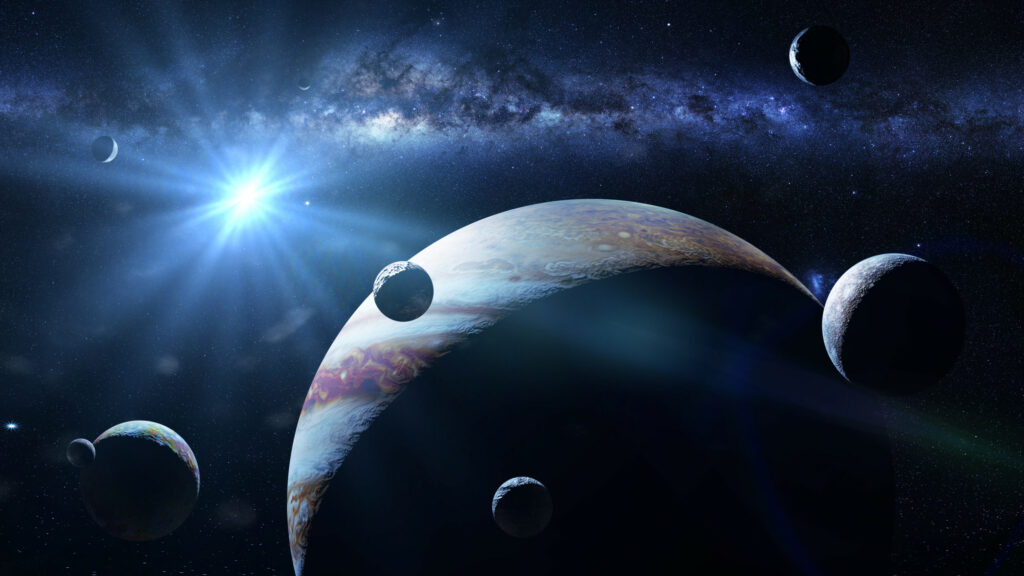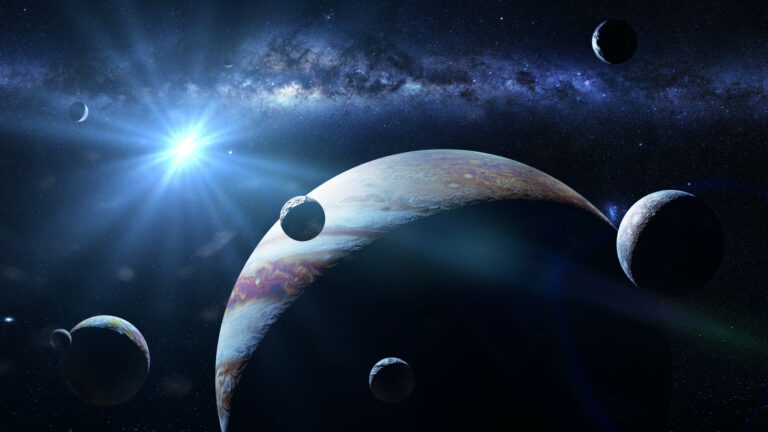Unlikely for “Hot Jupiter” Exoplanets to Possess Moons
According to recent research published in The Astrophysical Journal Letters on August 20, it is highly unlikely for planets of the major type discovered outside our solar system to have moons. These planets, known as “hot Jupiter” planets, are large and closely orbit their stars. Despite the presence of multiple moons around large planets in our solar system, no moons have been found around hot Jupiter planets so far.
The study, led by astronomer Fathi Namouni from the Universite de Nice, CNRS, at the Observatoire de la Cote d’Azur in France, utilized computer simulations to determine that moons forming or orbiting hot Jupiter planets that migrate close to their stars are unlikely to survive. This is due to the significant gravitational forces exerted by the planet and star. Inner moons would be destroyed upon collision with the planet, while outer moons would be ejected from the planet’s orbit.
Hot Jupiter planets are believed to originate in the outer regions of their solar systems and gradually migrate towards their stars over a span of approximately 100,000 years. As the planet moves closer to the star, its influence on any moons diminishes, rendering them unstable.

The gas giant in the computer simulation undergoes migration towards its star, transforming into a hot Jupiter. Initially, the planet possesses four sizable moons, but unfortunately, all of them are lost during the migration process. The three outermost moons are flung into elongated orbits around the star, while the innermost moon collides with the planet, resulting in its destruction.
According to Namouni, if any moons are discovered around a hot Jupiter, they must have been captured at a later time, similar to Neptune’s Triton, which happens to be the largest captured moon in our solar system. Triton is believed to have been captured due to its orbit being in the opposite direction compared to the other moons of Neptune.
The computer simulations did not consider the possibility of moons forming from material orbiting the planet after a moon crashes into its surface.
Astronomers will persist in their search for extrasolar moons around hot Jupiter planets, as they constitute the majority of planets discovered thus far. One method they plan to employ is observing hot Jupiters as they transit in front of their stars. The presence of significant moons would cause variations in the timing of these transits. Although hot Jupiters themselves may not be capable of supporting life, this may not hold true for any moons orbiting these planets.
This article is republished from PhysORG under a Creative Commons license. Read the original article.
Do not forget to share your opinion with us to provide you with the best posts !




0 Comments